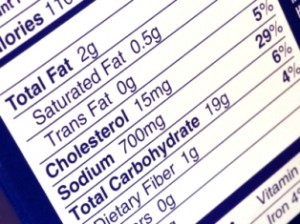Nutrition Fiction
Study: Restaurant, Frozen Fare Higher in Calories than What’s Listed

Tufts University researcher finds that restaurant foods are often 20 percent higher in calories than what's listed.
It’s said that you can’t believe everything you read in the papers, but since when can we not believe everything we read on nutrition labels?
Since now, that’s when.
According to a study published in the January issuing of the Journal of the American Dietetic Association, nutrition labels on restaurant menus and frozen food boxes are often wrong, underestimating the number of calories and fat grams there are in a given serving.
The study, led by Susan Roberts of Tufts University, analyzed menu items from just under 30 different restaurant chains like Ruby Tuesdays and Wendy’s, and 10 different frozen food items, like Healthy Choice Tomato Basil Penne and Lean Cuisine Lemon Chicken.
After calorie analysis was through, she found that restaurant menu items were on average 20 percent higher in calories than what was listed on menus and that frozen food items were a little less than 10 percent higher in calories than what was listed on the packages.
Now, as Roberts herself says, this isn’t a dramatic difference, but in the battle of the bulge, every little bit counts—especially if you’re someone that relies on others making your meals (either frozen or prepared in a restaurant).
For example, say you’re having Lean Cuisine’s Chicken Tuscan Panini. One sandwich has about 320 calories and seven grams of fat. A perfectly reasonable lunch, right? Well if Roberts’ analysis is accurate, those 320 calories are really about 350 calories.
Not a huge difference at first blush, but eat the same Panini over a week’s time, and the added calories comes to about one extra sandwich (320×7=2,240; 350×7=2,450 210 extra calories).
Again, when you’re trying to lose weight, it’s really about the little things that makes the biggest difference: Instead of two tablespoons of salad dressing, one; instead of a full muffin, just the muffin top; and instead of a generous smearing of mayo on your veggie sub sandwich, a light coating of olive oil. You can do all this yourself.
The hope was that convenience food companies and restaurateurs were being upfront about their calorie labeling. But as it turns out, this was too much for even them to handle. So I guess even in the food world, you have to live by the D.I.Y. rule of life: If you want to get something done (i.e. lose weight), you often have to do it yourself.
Sources:
msnbc.msn.com
news.yahoo.com
leancuisine.com
Related Posts
 
|
Enjoy this article? We guarantee your privacy. Your email address will NEVER be rented, traded or sold. |
Visit my new site: Self Help On The Web
 |
 |
Posted: January 10th, 2010 under Nutrition Labels.
Tags: nutrition facts, nutrition facts labels, nutrition label






